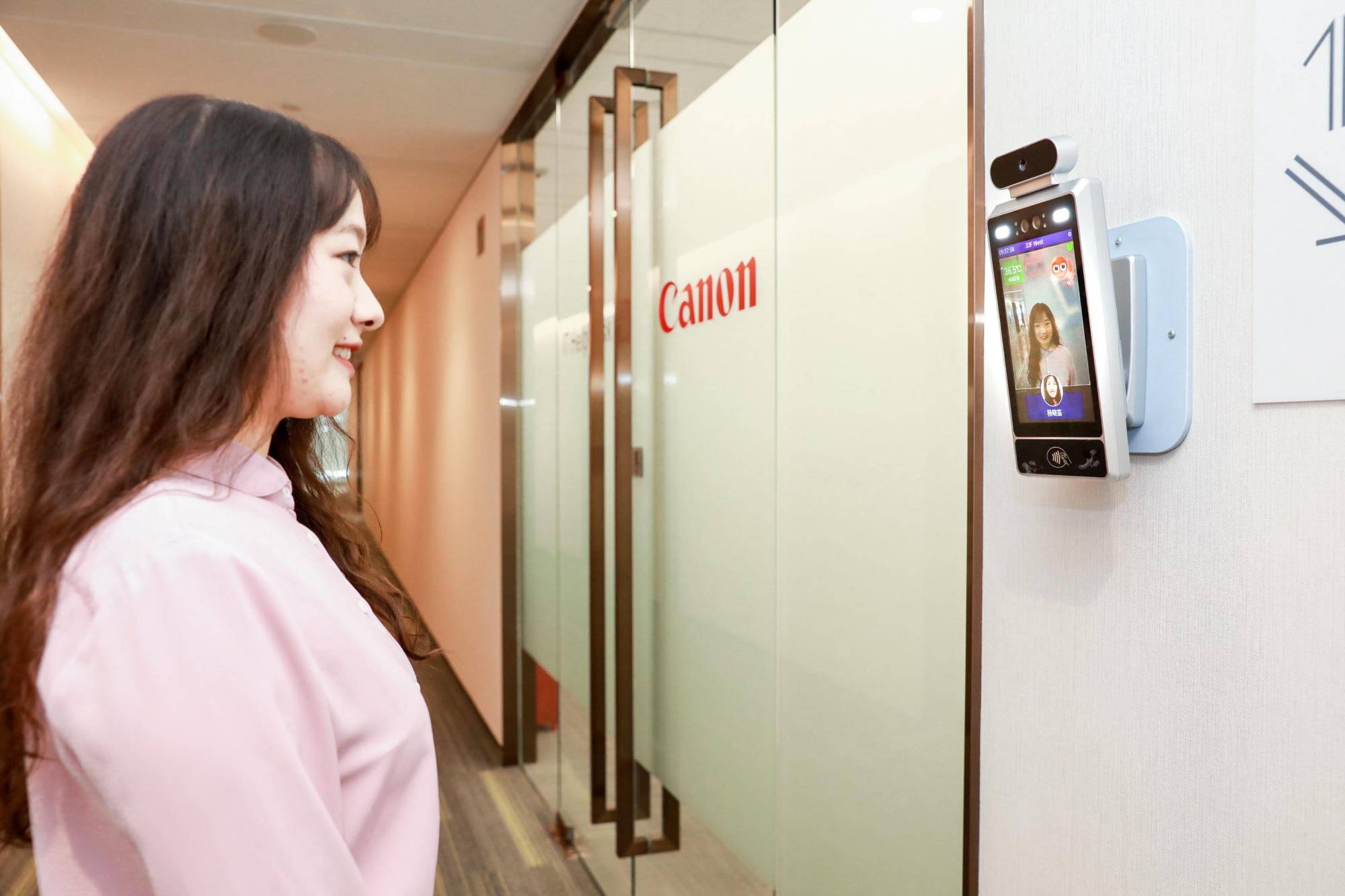Spotlight Interview – Andrew Fitzpatrick | BrainBox AI
2023's final Spotlight Interview is with Andrew Fitzpatrick, a former civil engineer who has worked on highly complex construction projects, including the...
Read Full Article
Canon Information Technology's Beijing office uses a workspace management system that only allows smiling employees to enter the premises and book rooms.
According to financial newspaper Nikkei Asia, the smile recognition algorithm is "intended to bring more cheerfulness to office in the post-pandemic era."
A spokesperson for Canon China told Nikkei: "We have been wanting to encourage employees to create a positive atmosphere by utilizing this system with the smile detection setting 'on'. Mostly, people are just too shy to smile, but once they get used to smiles in the office, they just keep their smiles without the system which created [a] positive and lively atmosphere.”
The smart IT solution, named "Jiachuang Space", also manages attendance and temperature measurement.
The motivation for Canon's use of this particular tech seems to be relating to wellbeing and the positive effect of smiling – but is there any evidence for this?
Research from the University of South Australia, published in Experimental Psychology, evaluated the impact of a covert smile on perception of face and body expressions. In both scenarios, a smile was induced by participants holding a pen between their teeth, forcing their facial muscles to replicate the movement of a smile.
The research found that facial muscular activity not only alters the recognition of facial expressions but also body expressions, with both generating more positive emotions.
Lead researcher and human and artificial cognition expert with UniSA’s Centre for Change and Complexity in Learning, Dr Fernando Marmolejo-Ramos says the finding has important insights for mental health:
“When your muscles say you’re happy, you’re more likely to see the world around you in a positive way."
“In our research, we found that when you forcefully practise smiling, it stimulates the amygdala – the emotional centre of the brain – which releases neurotransmitters to encourage an emotionally positive state. For mental health, this has interesting implications. If we can trick the brain into perceiving stimuli as ‘happy’, then we can potentially use this mechanism to help boost mental health"
A 2019 study from the Journal of Occupational Health Psychology may challenge this notion. The report, named "When are fakers also drinkers? A self-control view of emotional labour and alcohol consumption among U.S. service workers" proposes that emotional labour such as forced smiles is linked to increased alcohol consumption for American employees in public-facing roles.
According to James Vincent from The Verge, smile recognition is simply one in a long list of "dystopian workplace surveillance" tools.
He wrote: "AI-enabled smile recognition cameras are in many ways the least dangerous types of surveillance technology. They have the benefit of being obvious. Other systems of control are much more subtle, and probably coming to an office near you sometime soon."
What Vincent may be referring to here is employers' use of surveillance software, known as bossware, with off-the-shelf products able to track keystrokes, mouse movements and even take random screenshots throughout the day.
Companies such as PwC have faced criticism for developing facial recognition tools to track employees, monitoring employees’ absences from their computer screens, including bathroom breaks.
Picture: a photograph of a person smiling in front of a facial recognition camera. Image Credit: Canon Information Technology
Article written by Ella Tansley | Published 29 June 2021
2023's final Spotlight Interview is with Andrew Fitzpatrick, a former civil engineer who has worked on highly complex construction projects, including the...
Read Full ArticleChat GPT has received significant attention in the field of natural language processing (NLP) due to its ability to generate human-like text and perform various...
Read Full ArticleA tech start-up that provides room-by-room energy management solutions for commercial buildings has raised close to £1 million in its second seed funding...
Read Full ArticleCBRE has acquired artificial intelligence business E2C Technology, with the intention of offering its clients additional data solutions. CBRE hopes to use the...
Read Full ArticleShumon Choudhury, who has over 15 years of experience managing PRS & FM portfolios, writes about his experiences helping his clients to embrace smart...
Read Full ArticleArtificial intelligence is changing medical practice and the healthcare industry. Technologies including machine learning and digitised data acquisition are allowing...
Read Full ArticleThe IFM Tour 2022, organised by Infraspeak, includes events in the UK, Spain, Brazil and Portugal to discuss Maintenance 5.0 and the future of the FM sector. The tour...
Read Full ArticleMeet Volvo prototype LX03 – billed as the intelligent future of construction. LX03 is a fully autonomous, battery-electric prototype by Volvo Construction...
Read Full ArticleThe Department for Business Energy and Industrial Strategy is to invest in 38 business-led projects to accelerate their robotics and AI technologies. Such...
Read Full ArticleBiosite Systems Ltd has developed a facial recognition solution to respond to increased demand for contactless site entry. At site entry and exit points,...
Read Full Article